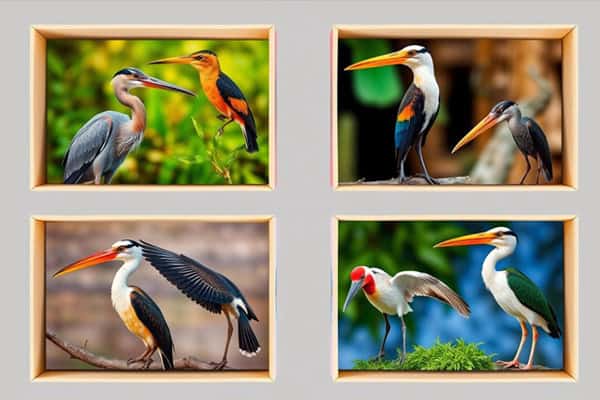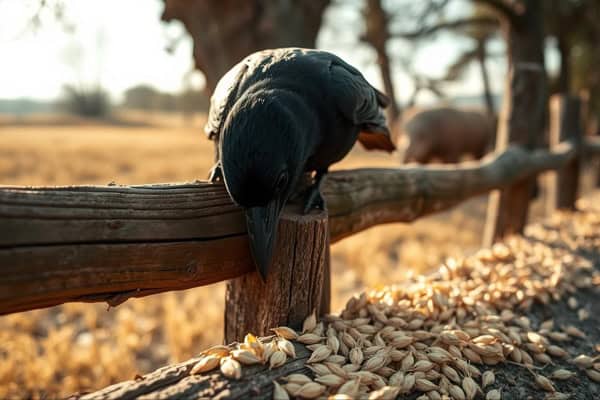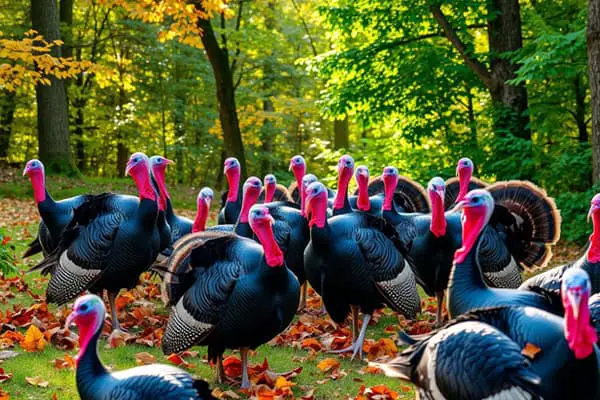16 Types of Birds with Long Beaks (ID Guide)
Here we’ll learn about Birds with Long Beaks. Did you know hummingbirds flap their wings up to 80 times a second? This lets them hover in mid-air and reach nectar deep in flowers. Many bird species have long beaks to fit their special places in nature. This guide will show you 16 amazing birds with long beaks, their looks, where they live, and what they eat.
We’ll see the Sword-billed Hummingbird’s long bill and the Cerulean Kingfisher’s bright blue feathers. These birds have special features that help them survive. If you love birds and nature, or just wonder about the world, you’ll find this guide fascinating.
Common Birds with Long Beaks
- Sword-billed Hummingbird
- Cerulean Kingfisher
- Slender-billed Scimitar Babbler
- Little Spiderhunter
- Eastern Spinebill
- Mountain Velvetbreast
- Greater Double-collared Sunbird
- Short-tailed Scimitar Babbler
- Loten’s Sunbird
- White-eared Jacamar
- Green Hermit
- Long-billed Starthroat
- Streaked Spiderhunter
- Long-billed Hermit
- Violet Sabrewing
1. Sword-billed Hummingbird
- Scientific Name: Ensifera ensifera
- Size: 11–13 cm (4.3–5.1 in)
- Weight: 8–12 g (0.28–0.42 oz)
- Lifespan: 3–5 years
- Diet: Nectar and small insects
The sword-billed hummingbird is a bird like no other, with the longest beak compared to its body size. It lives in South America and has a long, unique bill. This bill helps it get nectar from deep flowers in the high forests it calls home.
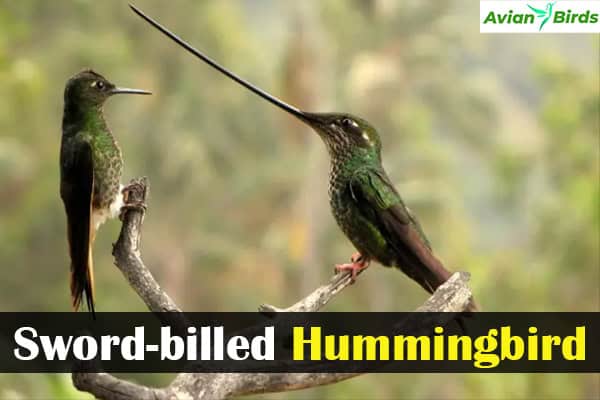
Physical Description
The male sword-billed hummingbird has a beautiful bronzy-copper head and a white spot behind each eye. His upperparts are dark bronze-green, and his throat is blackish. The females have a whiter underside and olive spots on their throats. Both males and females have an amazing bill that can be up to 4 inches long, longer than their whole body!
Habitat and Distribution
This bird lives in the high forests of northwestern South America. You can find it in Colombia, Ecuador, Peru, and Bolivia. These forests are perfect for it because they have lots of deep flowers. These flowers match the bird’s special way of eating.
Diet and Feeding
The sword-billed hummingbird eats nectar, insects, and spiders. Its long bill lets it get nectar from deep in flowers like bromeliads and fuchsias. This skill makes it different from other hummingbirds that can’t reach these flowers.
2. Cerulean Kingfisher
- Scientific Name: Alcedo coerulescens
- Size: 16–18 cm (6.3–7.1 in)
- Weight: 30–40 g (1.1–1.4 oz)
- Lifespan: 5–10 years
- Diet: Fish, crustaceans, and insects
The cerulean kingfisher is a bird that catches the eye with its bright blue feathers. It lives near rivers and streams in Indonesia. This bird is part of the fish-eating kingfisher family, known for their hunting skills and bright colors.
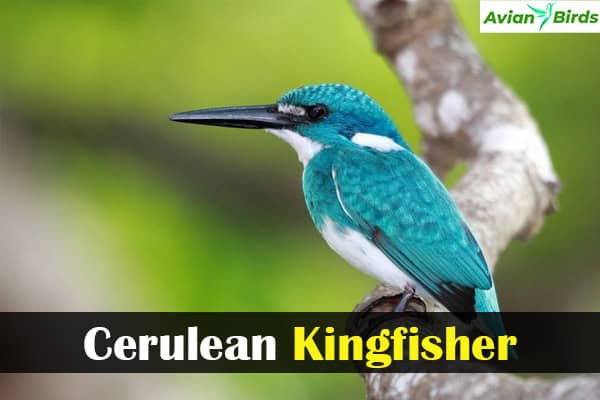
Both males and females have a vibrant blue color. But, males show a deeper blue than females, who have a slight greenish tint. Their long, pointed beaks help them catch fish, crustaceans, and insects from the water.
This bird’s beauty and unique way of eating make it a favorite among birdwatchers and nature lovers. It adds beauty and wonder to the Indonesian waterways.
| Characteristic | Description |
|---|---|
| Size | Approximately 17-19 cm in length |
| Wingspan | 25-28 cm |
| Weight | 30-40 grams |
| Habitat | Rivers, streams, and other aquatic environments in Indonesia |
| Diet | Fish, crustaceans, and insects |
The cerulean kingfisher is a true treasure of Indonesian birds. Its bright blue color and long beak show the amazing diversity and adaptations of these birds.
Birds with Long Beaks: Unusual Shapes and Sizes
Hummingbirds and kingfishers are famous for their long bills. But, many birds in Southeast Asia and Australia have unique beaks too. Let’s look at some interesting ones.
3. Slender-billed Scimitar Babbler
- Scientific Name: Pomatorhinus superciliaris
- Size: 23–25 cm (9.1–9.8 in)
- Weight: 50–70 g (1.8–2.5 oz)
- Lifespan: 5–7 years
- Diet: Insects and plant matter
The Slender-billed Scimitar Babbler lives in Southeast Asia’s forests and thickets. It has a long, curved beak like a scimitar sword. This shape helps it find insects, spiders, and berries in tight spaces.
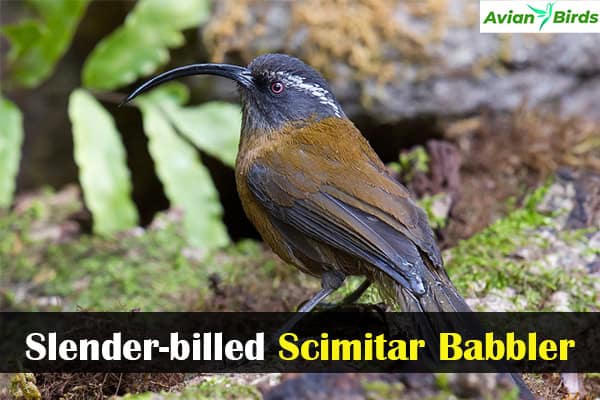
4. Little Spiderhunter
- Scientific Name: Arachnothera longirostra
- Size: 12–14 cm (4.7–5.5 in)
- Weight: 8–10 g (0.28–0.35 oz)
- Lifespan: 4–6 years
- Diet: Nectar, insects, and fruits
The Little Spiderhunter is found in South and Southeast Asia. It has a long, down-curved bill perfect for eating spiders, insects, and nectar. This special beak lets it survive in its home.
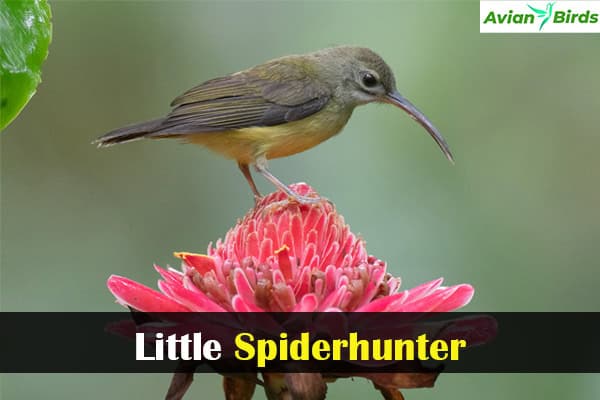
5. Eastern Spinebill
- Scientific Name: Acanthorhynchus tenuirostris
- Size: 10–12 cm (3.9–4.7 in)
- Weight: 9–14 g (0.32–0.49 oz)
- Lifespan: 3–5 years
- Diet: Nectar and small insects
The Eastern Spinebill lives in Australia’s forests, woodlands, and cities. It has a long, thin, and down-curved bill. This beak shape lets it get nectar from different flowers, helping pollinate its area.

Birds with curved beaks, like the scimitar-billed and spiderhunter birds, show how diverse and adaptable long-beaked birds are in Southeast Asia and Australia.
Vibrant Nectar Feeders with Long Beaks
Many birds have long beaks to get to nectar, a food full of energy. The Mountain Velvetbreast and the Greater Double-collared Sunbird are two examples. They are hummingbirds and sunbirds that love nectar.
6. Mountain Velvetbreast
- Scientific Name: Lophornis adorabilis
- Size: 9–11 cm (3.5–4.3 in)
- Weight: 5–7 g (0.18–0.25 oz)
- Lifespan: 3–5 years
- Diet: Nectar and small insects
The Mountain Velvetbreast lives in the forests of northwestern South America. It has a long, curved beak for getting nectar from deep flowers. Its bright green head and soft black body shine in the sunlight as it moves from flower to flower.

7. Greater Double-collared Sunbird
- Scientific Name: Cinnyris Afer
- Size: 12–14 cm (4.7–5.5 in)
- Weight: 10–15 g (0.35–0.53 oz)
- Lifespan: 5–8 years
- Diet: Nectar, insects, and fruits
The Greater Double-collared Sunbird is from southern Africa. It also has a curved beak for nectar and eats insects and spiders too. You can find it in many places, from forests to gardens, helping plants by pollinating them.

These birds show how amazing nature is. They have special beaks to get to nectar in South America and Africa.
Tropical Forest Dwellers with Elongated Bills
Tropical forests are full of bird species with long, slender beaks. These beaks help them live in these lush places. Birds like the scimitar babblers, sunbirds, and jacamars show how well they’ve adapted.
8. Short-tailed Scimitar Babbler
- Scientific Name: Pomatorhinus brachyurus
- Size: 22–24 cm (8.7–9.4 in)
- Weight: 40–60 g (1.4–2.1 oz)
- Lifespan: 5–7 years
- Diet: Insects and plant material
In Vietnam and Laos, the Short-tailed Scimitar Babbler lives in the forests. It has a long, slightly curved beak. This beak helps it find insects and spiders in the dense foliage.
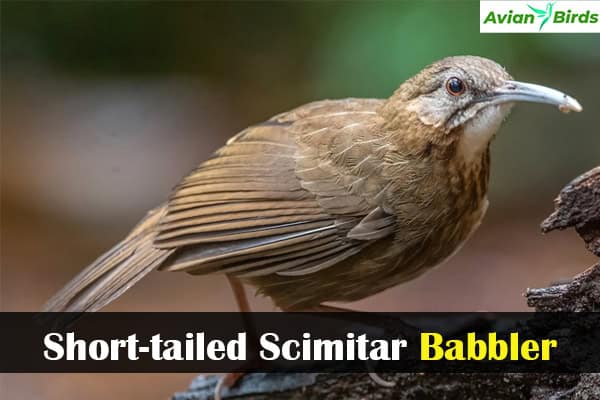
9. Loten’s Sunbird
- Scientific Name: Cinnyris lotenius
- Size: 11–12 cm (4.3–4.7 in)
- Weight: 8–12 g (0.28–0.42 oz)
- Lifespan: 4–6 years
- Diet: Nectar and small insects
The Loten’s Sunbird lives in the forests of Southeast Asia and India. It has a long, curved bill. This bill lets it eat nectar, insects, and spiders in the woods and forests.

10. White-eared Jacamar
- Scientific Name: Galbalcilla cyanoptera
- Size: 20–23 cm (7.9–9.1 in)
- Weight: 30–40 g (1.1–1.4 oz)
- Lifespan: 5–10 years
- Diet: Insects and small vertebrates
The White-eared Jacamar calls the forests and forest edges home in northwestern South America. It’s a chestnut-colored bird with a pinkish-red, long beak. This beak helps it catch insects and other prey in its home.

These birds show how well they’ve adapted to their Southeast Asia, Indian, and South American environments. Their unique looks and skills make them wonders of nature.
Birds with Long Beaks: Adaptations for Nectar Feeding
Many birds with long, slender beaks have evolved to feed on nectar. This high-energy food needs special ways to get it. These birds live mainly in Central and South America. They help pollinate many plants by eating nectar.
11. Green Hermit
- Scientific Name: Phaethornis guy
- Size: 10–12 cm (3.9–4.7 in)
- Weight: 4–6 g (0.14–0.21 oz)
- Lifespan: 3–5 years
- Diet: Nectar and small insects
The Green Hermit lives in Central and Northern South America. It has a long, slightly curved beak. This beak helps it get nectar from deep in flowers in forests and edges.
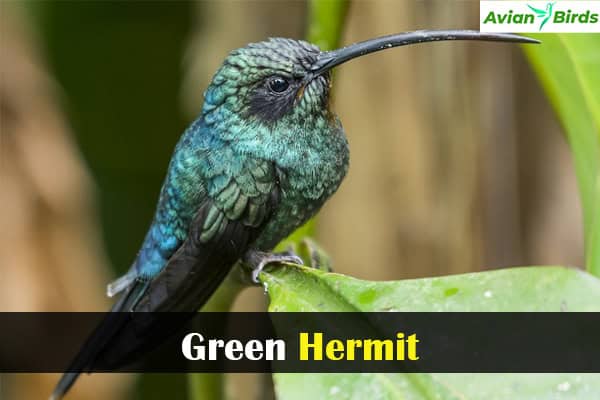
This lets the Green Hermit get the nectar it needs to stay active.
12. Long-billed Starthroat
- Scientific Name: Heliomaster longirostris
- Size: 10–12 cm (3.9–4.7 in)
- Weight: 6–9 g (0.21–0.32 oz)
- Lifespan: 3–5 years
- Diet: Nectar and small insects
The Long-billed Starthroat is a hummingbird from southern Mexico to northern South America. It has a very long, straight beak for getting nectar. This beak lets it reach deep into flowers to get the nectar it needs.

13. Streaked Spiderhunter
- Scientific Name: Arachnothera magna
- Size: 18–20 cm (7.1–7.9 in)
- Weight: 20–30 g (0.71–1.06 oz)
- Lifespan: 4–6 years
- Diet: Nectar, insects, and fruits
The Streaked Spiderhunter is a bird that stays in Southeast Asia’s forests. It has a long, curved beak for eating insects and nectar. This beak helps it use many food sources, including nectar-rich flowers in its home.
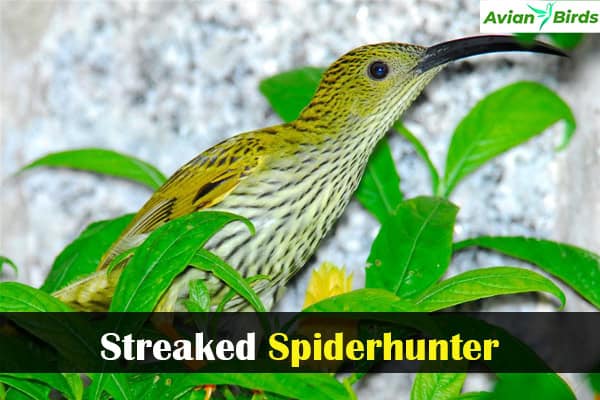
Unique Shapes and Colors of Long-beaked Birds
The world of birds is full of long-beaked species, each with its own special look and bright colors. The Long-Billed Hermit and the Violet Sabrewing are two examples. They show how different birds can be, thanks to their unique beaks.
14. Long-billed Hermit
- Scientific Name: Phaethornis longirostris
- Size: 10–12 cm (3.9–4.7 in)
- Weight: 5–7 g (0.18–0.25 oz)
- Lifespan: 3–5 years
- Diet: Nectar and small insects
The Long-billed Hermit is a tiny hummingbird from southern Mexico, Central America, and northern South America. It’s a natural wonder with its long, curved beak and eye-catching tail streamers. This bird’s beak lets it reach deep into flowers for nectar, helping pollinate its forest home.
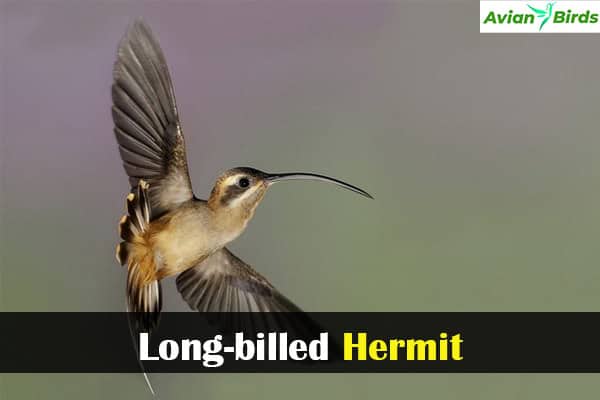
15. Violet Sabrewing
- Scientific Name: Campylopterus hemileucurus
- Size: 11–13 cm (4.3–5.1 in)
- Weight: 10–12 g (0.35–0.42 oz)
- Lifespan: 4–6 years
- Diet: Nectar and insects
The Violet Sabrewing is another long-beaked hummingbird from the same area as the Long-billed Hermit. It has beautiful violet feathers and a long, thin beak. This makes it perfect for drinking nectar from certain flowers. The Violet Sabrewing stands out with its beauty and special beak.
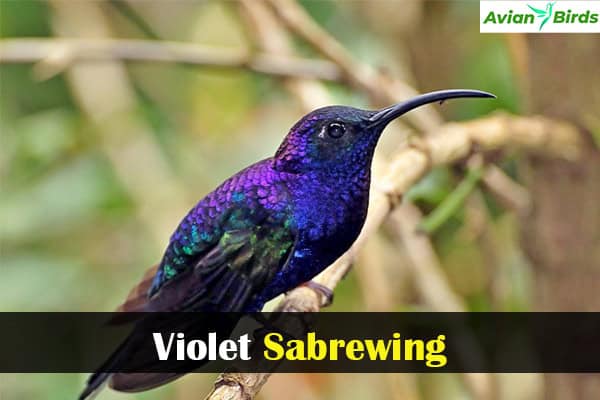
Long-billed hummingbirds and other long-beaked birds show how diverse and adaptable birds can be. They have unique traits and adaptations. From the Violet Sabrewing’s bright colors to the Long-billed Hermit’s beak shape, these birds prove the beauty of nature.
Read more 🐦Related Articles:
| Birds Chirping at 3AM Spiritual Meaning |
| Mythical Birds and Creatures |
| What Are Safe Paints for Bird Baths |
| Red Birds In Michigan |
| Blue Birds in Pa (Pennsylvania) |
Conclusion
In this guide, we’ve looked at 16 species of birds with long beaks. These birds show the amazing diversity and special traits in the bird world. From the Sword-billed Hummingbird to the Violet Sabrewing, each has a unique beak shape and size.
These beaks help them feed on nectar, insects, or small prey. By learning about these birds, we see how form and function work together in nature. The Cerulean Kingfisher, Slender-billed Scimitar Babbler, and Mountain Velvetbreast are just a few examples.

